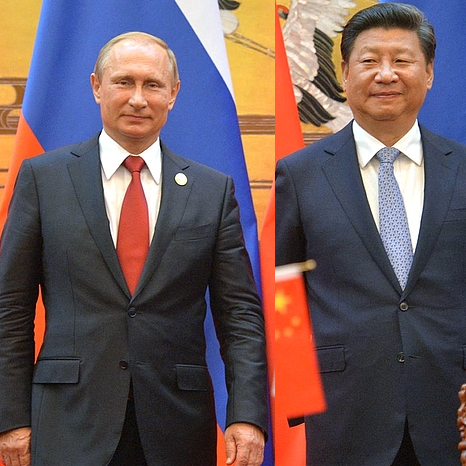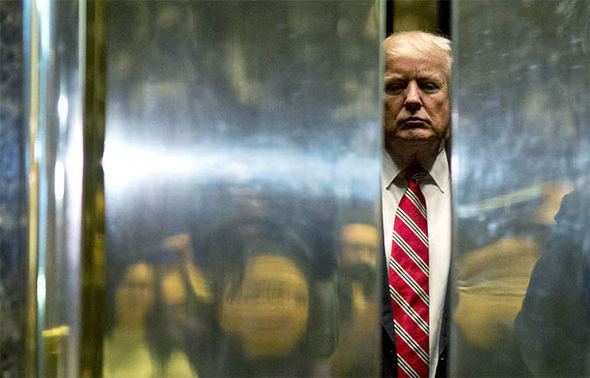Russia & China Are Very Interested in U.S. Gold Reserves
Recently, Russian television network RT extensively quoted me in a series of articles about the US Government’s gold reserves. The RT articles, published on the RT.com website, were based on a series of questions RT put to me about various aspects of the official US gold reserves. These gold reserves are held by the US Treasury, mostly in the custody of the US Mint. The US Mint is a branch of the US Treasury.
The first of these articles, published by RT on 30 December 2017, is titled “US gold of low purity & that’s why audit of reserves will never be allowed – expert tells RT”.
The second article was published by RT on 8 January 2018 and is titled “Russia-China combined gold reserves could shake US dominance in global economy – expert tells RT”
As the subject matter of US gold reserves is broad and wide-ranging, the RT questions and my answers and opinions covered a lot of material and RT therefore decided to divide it’s coverage into 2 articles. The first RT article covered the lack of transparency into the US gold reserves, the fact that has never been any of independent audits of the gold, and the fact that a lot of gold bars that the US claims to hold are actually low purity gold bars which do not conform to international industry standards on tradable wholesale gold bars (i.e. Good Delivery standards).
The first article also touched on the international reaction to and the effects on the US dollar that might unfold if the US gold reserves were found to be less than they are claimed to be.
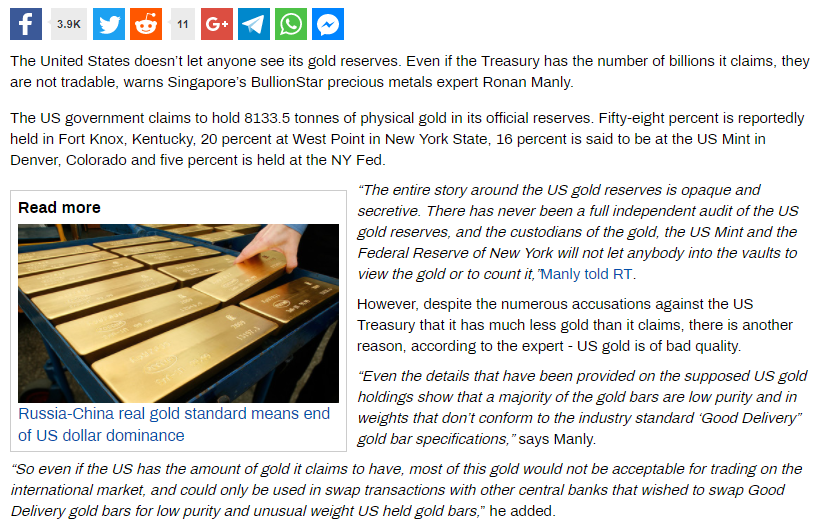
The second RT article looked at the gold holding strategies of China and the Russian Federation, where the central banks of both nations have been actively accumulating their national gold reserves over the last 10-15 years, and where both central banks have been vocal about this monetary gold accumulation, possibly in preparation for a future return to a gold-backed monetary standard.
The second RT article also explored the scenario under which both China and Russia could have significantly more gold accumulated than they have publicly divulged, a situation which if revealed would put the spotlight back on to the claimed gold holdings of the US Treasury.
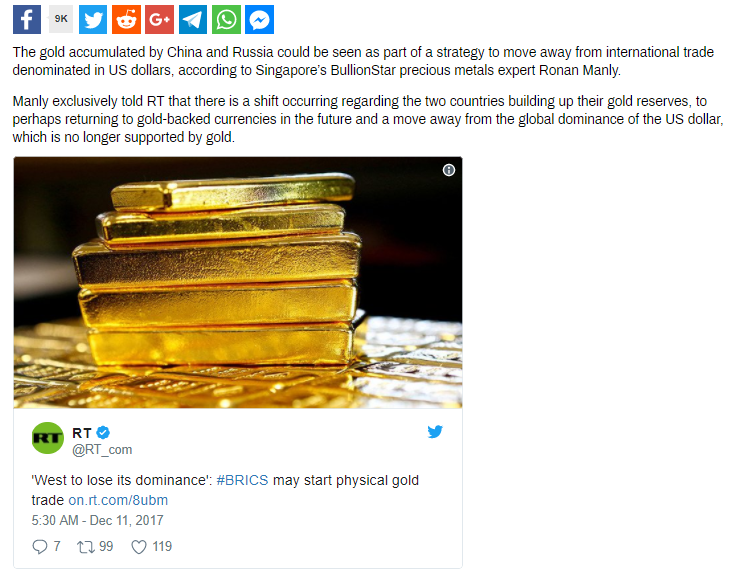
Following the RT articles, on 11 January, Beijing-based Chinese business and financial website BWChinese picked up on my quotes in the second RT.com article, and in a geo-political article about oil, the Renminbi, the US Dollar and gold (written in Chinese), the Chinese website linked the gold accumulation of China and Russia to part of a strategy of moving away from the dominance of the US dollar. The BWChinese article (in Chinese) can be seen here.
Then finally on 16 January, Moscow headquartered Sputnik news agency, in an article titled “Chinese Media Explain How Russia & China Can Escape ‘Dollar Domination”, profiled the BWChinese article, and essentially (and conveniently) summarized the entire Chinese article back into English. Interestingly, there was therefore coverage of the topic of official US gold reserves from Moscow across to Beijing, and back to Moscow again, all within the space of a week and spanning 3 media publications, namely RT, BWChinese and Sputnik.
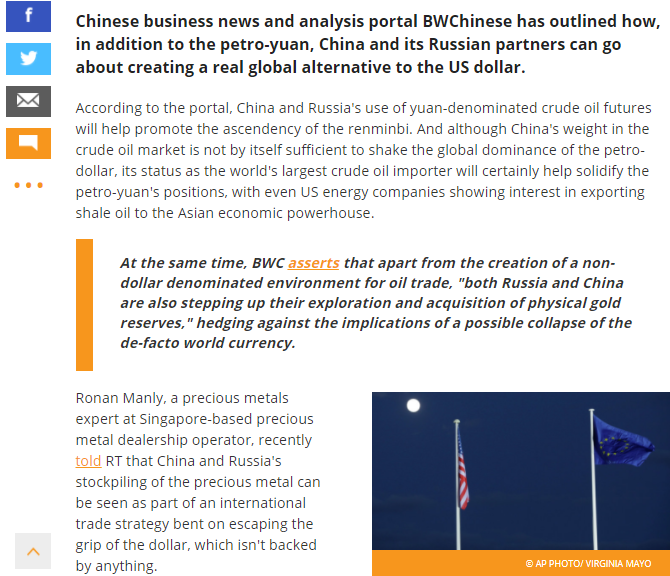
As background to this media coverage, this blog post looks at the topics covered in the RT.com articles, and details the opinions and material that formed the basis to the original RT articles.
The claimed physical gold held by the US Government
The US Government claims to hold 8133.5 tonnes of physical gold in its official reserves. However its impossible to verify this number because the entire story around the US gold reserves is opaque and secretive. Therefore, it’s impossible to say how much, or how little, physical gold the US actually has. This is so because there has never been a full independent audit of the US gold reserves, and the custodians of the gold (the US Mint and the Federal Reserve of New York) will not let anybody into the vaults to view the gold or to count it.
Even the details that have been provided on the supposed US gold holdings show that a majority of the gold bars are low purity and in weights that don’t conform to industry standard ‘Good Delivery” gold bar specifications.
The US Government gold reserves are held in the name of the US Treasury and are supposedly held in Fort Knox, Kentucky, and West Point, New York, and in the US Mint in Denver. And further small amount of US Treasury gold (5%) is supposedly held in the vaults of the Federal Reserve bank of New York (FRBNY). The US Treasury reports on this gold in a monthly report called “Status Report of U.S. Government Gold Reserve”.
Of the 8133.5 tonnes, this means, based on the official reporting, that:
- 58% is allocated to Fort Knox, Kentucky: 4583 tonnes
- 20% is allocated to West Point, New York State: 1682 tonnes
- 16% is allocated to US Mint Denver, Colorado: 1364 tonnes
- 5% is allocated to the NYFED: 418 tonnes
Afur ther 1% of the US gold reserves are listed by the US Treasury as being in working stock of the US Mint (a figure which never changes), which is 86 tonnes (or 2,783,218 ounces). This working stock probably represents a loan of gold that the US Mint took from the gold stock, that is now a liability of the US Mint to the US Treasury. So overall, 7629 tonnes of the gold is supposedly held between Fort Knox, West Point and Denver, and these holdings are said to be held over 42 gold storage compartments.
Interestingly, both the Fort Knox depository and the West Point facility are adjacent to US army bases. But the US Mint facility in Denver is not. Notably, the US Mint website was recently updated and no longer claims that any US gold is stored in Denver. See BullionStar blog “Is there any gold bullion stored at the US Mint in Denver?" for more details.
A “Good Delivery” gold bar, as traded and accepted on the international wholesale gold market, and as generally held by central banks across the world, has to satisfy the following criteria:
- Have a minimum gold content of 350 fine troy ounces (approx 10.9 kilograms) and a maximum gold content of 430 fine troy ounces (approx 13.4 kilograms).
- Have a minimum acceptable fineness is 995.0 parts per thousand fine gold
US Official Gold Inventories – Low Purity Bars
Surprisingly, there are gold bar weight lists in the public domain detailing all of the gold bars that the US Treasury claims to hold. These weight lists were included as part of a submission to a June 2011 US House Committee on Financial Services hearing on oversight of US gold holdings.
The US Treasury gold claimed to be stored at Fort Knox, West Point and Denver is detailed in a pdf document here (http://financialservices.house.gov/uploadedfiles/attachment_4_mints_schedule_of_inventory_of_deep_storage_gold_reserves.pdf). The same list is also in an Excel spreadsheet here (http://financialservices.house.gov/uploadedfiles/mints_schedule_of_inventory_of_deep_storage_gold_reserves.xls).
The US Treasury gold claimed to be stored at the Federal bank of New York (FRBNY) vaults is listed in another weight list which can be seen here (http://financialservices.house.gov/uploadedfiles/112-41.pdf) starting on page 132 of the pdf (or page 128 of the document). According to this inventory statement, about 5% of the US Treasury’s gold is held at the FRBNY in the form of 31,204 bars stored in 11 compartments (listed as compartments A – K). See BullionStar blog post “The Keys to the Gold Vaults at the New York Fed – Part 3: ‘Coin Bars’, ‘Melts’ and the Bundesbank" for screenshots of the actual weight list of US Treasury gold listed as being at the FRBNY. You will notice that a lot of the gold bars, about 50 tonnes worth, are very old bars, and are listed as being in the form of low gold purity coin bars, bars that were fabricated from melting down gold coins.
These weight lists states that there are just under 700,000 gold bars in Fort Knox, West Point and Denver combined, and 31,000 bars held with the NY Fed vaults in New York.
Two short tables summarising the weight and purity of the US Treasury’s gold bar weight lists can be seen at the Goldchat blog site in an article titled from March 2014 titled “US deep storage gold reserves bar list made public“. These tables are as follows:


However, the Fort Knox – West Point – Denver weight list shows that nearly all the gold bars in Fort Knox and Denver are “coin bars”, again gold bars that were produced from melting down gold coins. Many of the gold bars listed as being in West Point are also coin melt bars. Around half of the US Treasury’s gold bars at the Federal Reserve Bank of New York are also in the form of coin bars.
In general, most of the US Treasury gold comprises bars that are either smaller and larger than the weights of Good Delivery bars and that are of low-grade purity bars (below the required purity of Good Delivery bars); e.g. a lot of the gold bars that the US treasury claims to hold have gold purity of 0.90 or 0.9167. Overall, less than 20% of the gold supposedly held between Fort Knox, West Point and Denver is Good Delivery Gold.
Without looking at a US Treasury weight list of claimed gold bar holdings, there are other data points which collaborative that the US official gold stock contains a lot of coin bar gold and other non-industry acceptable gold.
In March 1968, the London Gold Pool collapsed primarily because the US Fed and US Treasury did not have any Good Delivery Gold to supply to the London market. Bank of England memos at that time make this very clear as they say that:
“It has emerged in conversations with the Federal Reserve Bank that the majority of the gold held at Fort Knox is in the form of coin bars, and that in certain cases these bars have a gold content of less than 350 fine ounces. If the drain on U.S. stocks continues it is inevitable that the Federal Reserve Bank will be forced to deliver what bars they have.
Capacity to further refine coin bars to the current minimum fineness of .995 in the United States is entirely inadequate to cope with conversion on the scale that would be required if the Americans wished to continue to deliver bars assaying .995 or better. Equally the capacity in the U.K. is inadequate for this task.”
“it would appear that the circumstances might well be such that very few bars of the current acceptable fineness could be found” (by the Americans).
See section titled “Scrapping the Barrel – March 1968" in BullionStar blog “The Keys to the Gold Vaults at the New York Fed – Part 3: ‘Coin Bars’, ‘Melts’ and the Bundesbank”
Additionally, nearly half of the US Treasury gold auctions over 1978-1979 were of coin bars, suggesting that the US Treasury did not have sufficient access to good delivery gold even back then, and that it had ran out of good delivery gold by 1979.
Between May 1978 and November 1979, the US Treasury engaged in 23 gold auctions, and started by selling 8.05 million ounces of high grade gold (99.5% fine) before switching to selling 7.75 million ounces of low grade gold (90% fine). That was over 15 million ounces (466 tonnes) of gold in total auctioned by the Treasury. The last US Treasury auctions were on 16 October 1979 when 750,000 ounces of low grade coin bars, and finally on 1 November 1979 when the Treasury auctioned 1,250,000 ounces of low grade coin bars.
Note, that Deutsche Bundesbank ‘officially’ holds some of its gold in the vaults of the New York Fed, and has never been on record as having held gold in the US Mint’s Fort Knox depository. But the delays on the Germans repatriating their gold from the US to Germany in 2013 – 2014, and the fact that a lot of bars had to be smelted into new bars suggests that whatever source it came from, it was from a source that supplied low-grade gold coin bars. Could it have been Fort Knox?
Impact on US position in global economy due to Russia and China increasing their official gold holdings
China and Russia have both been aggressively accumulating their official gold reserves over the last 10-15 years. The Bank of Russia, on behalf of the Russian Federation, claims to now hold 1828 tonnes of gold. The People’s Bank of China (PBoC), on behalf of the Chinese state, claims to hold 1842 tonnes of gold.
However, a decade ago, the Bank of Russia only held 400 tonnes of gold. And in 2001 the PBoC held less than 400 tonnes. But now both these nations hold a combined 3670 tonnes of gold. See BullionStar blog “Neck and Neck: Russian and Chinese Official Gold Reserves” from October 2017 for more details.
Interestingly, both Russia and China publicize and promote their accumulations of gold and publicly refer to gold a strategic monetary asset. They make no secret of this On the flip side, the US does the opposite, and constantly downplays the strategic role of gold. China and Russia appear to view gold as the only strategic monetary asset that can provide independence from the US dollar.
So there is a shift occurring in terms of Russia and China building up their gold reserves, to maybe in future have gold-backed currencies, and to move away from the global dominance of the (unbacked by gold) US dollar.
And even if the dollar is backed by oil (petro-dollar), the gold accumulation by China and Russia can still be seen as part of a strategy to move away from international trade denominated in US dollars.
Additionally, both China and Russia could conceivably be holding a lot more gold than they declare in their official gold reserves. China through other entities such as SAFE, or the large Chinese commercial banks, and Russia through entities such as the Gokhran.
If China and Russia combined showed that they held more gold on a combined bases than the US, this would, even symbolically, be a low to the US dollar and to the position of the US in the global economy.
Is it Still Important for a Country to Hold Vast Gold Reserves
Yes. Gold is an asset of last reserve for central banks. Gold is a high-quality asset, analogous to a war chest. Countries with larger gold reserves are more immune to crises. And if gold is revalued in a new international monetary system, the countries with more gold will be more powerful monetarily.
Physical gold is highly liquid, it doesn’t have any counterparty risk, it’s a safe haven asset in times of crisis, and its an asset that can be called upon for liquidity by central banks in times of monetary crises.
Central banks can also activate gold by lending, leasing and swapping part of their gold holdings to generate a return. Most central banks value gold at market prices on their balance sheets, which creates one of the most valuable assets on most central banks’ balance sheets.
Is Holding Physical Gold becoming an Outdated Concept in the Western World
It’s true that western investors seem to now place less emphasis on ownership of physical gold relative to the past. For example, look at the huge growth of over-the-counter trading in London of synthetic fractionally backed gold positions and the huge growth of gold futures trading on venues such as the COMEX, both of which are mostly cash-settled and both of which have very little to do with any underlying physical gold holdings. The growth of gold-backed ETFs where the holders cannot take delivery of any gold is also symptomatic of this dislocation. However, these trends are in the institutional space.
Physical gold demand among retail investors is still very strong. Just look at some of the large physical gold markets such as Germany, Switzerland, Austria and the US and Canada where retail investors still know the value and benefits of holding real physical gold, as opposed to paper promises.
If the US doesn’t have as much Physical Gold as it Claims, what does it mean for the US Dollar in International Trade.
If the US was shown to have less physical gold that it claims to have, it would have a negative effect on the US dollar is indirect ways, but not through an immediate weakening of the US dollar or an immediate shift away from using the US dollar for international trade.
Firstly, proof of lower US gold reserves than claimed would add pressure for a full independent audit of all US gold reserves. It would also put the spotlight on the gold reserves of other major trading blocs such as the Eurozone and China and Russia, and open up a debate as to what is the role of gold in the international monetary system. Which is something the US government constantly tries to avoid (i.e. discussion about gold). It might also precipitate a move by nations which seek to replace the US dollar to advance their agendas in introducing an international monetary system backed by gold, knowing that the US would be on the back foot.
It would also then refocus attention on international holders of US dollars pre-August 1971 when Nixon closed the gold window, because after all those outstanding dollars held at the time by foreign central banks are still technically convertibility into gold at the official gold price of the time.
Indirectly, if the US Treasury gold holdings were seen to be falsified, it would also add pressure on the central banks that claim to hold gold at the Federal Reserve Bank of New York to prove that they too hold the amount of gold they claim to on US soil.
Can We Expect a Proper Audit of US Treasury Gold Reserves
A proper audit of the US Treasury gold reserves would be in the form of a full and independent audit of all US Treasury claimed gold reserves at the same time, i.e. across the 4 claimed storage locations. Weighing all gold bars, checking assays and publishing a full weight list in the public domain. It would have to be conducted by a fully independent auditor.
Can we expect such as proper audit of the US gold reserves? No, never. The chances of that ever happening are practically zero since the US Treasury (via the US Mint) does not even let anyone in to see the US gold reserves. Nor does the NY Fed ever let anyone in to see all of the US gold (and foreign held gold) claimed to be held in the NY Fed vaults. There has never been at any one time a full physical independent audit of all the gold which the US Treasury claims to hold.
Even a summary explanation of the US gold ‘audit’ history is confusing and convoluted. Try explaining it to someone, and they will quickly come to the same conclusion.
For example, the physical gold audit at Fort Knox in 1953 was only conducted on gold within 3 compartments and this represented only 13.6% of the gold claimed to be held in Fort Knox at that time. Anyway, this historic audit is so long ago it is irrelevant since much of the US gold was sold off in the 1950s and 1960s.
There have supposedly been audits of the US Treasury gold since 1973, but these have been partial, confusing and have dragged out over many years (continuing audits), and most importantly, these audits have never been conducted by an independent auditor.
Over October and November 1974, a physical audit was carried out on 21% of the gold held at Fort Knox. This audit was done by the General Accounting Office (GAO), in conjunction with auditors from the US Mint, the Bureau of Government Financial Operations (BGFO), US Customs, and the Treasury Department’s Office of Audit.
In June 1975, the US Secretary of the Treasury ordered a continuing audit of all US Government-owned gold, with a target of auditing 10% of US gold every year. A committee comprising the US Mint, the US Bureau of Government Financial Operations (BGFO) and the Federal Reserve Bank of New York were appointed to carry out these continuing audits. Continuing audits were undertaken between 1975 and 1986, after which the Treasury claimed that 97% of all US gold had now been audited.
By September 1982, the continuing audit program had supposedly audited 100% of the gold stored at Fort Knox. By September 1984, the continuing audit program had supposedly audited 99.9% of the gold stored at the Denver Mint.
But in 1983, the US Department of Treasury’s Office of the Inspector General (OIG) issued revised audit guidelines and more than 1,700 tonnes at Fort Knox and Denver being supposedly re-audited between July 1983 and July 1986.
Then from 1986 to 1992, the US Mint supposedly undertook additional audits of gold storage compartments that hadn’t been placed under official joint seal by the continuing audits committee.
In 1993 the OIG took over the annual audits of US Mint held gold. By 2008, all the gold held by the Mint had been placed under official seal. In 2010, the OIG claims to have renewed the joint seals on all 42 gold storage compartments at the US Mint storage facilities.
These annual audits merely consist of checking the official joint seals put on the vault compartment doors during the continuing audits from 1974 until 1986,
There should be 13 annual audit reports of the continuing audit. But 7 of these audit reports are missing and neither the OIG or the Treasury Department, or the National Archives can produce them.
Is physical gold still moving from West to East
Yes, there is a trend of physical gold moving from West to East, much of which goes to China and India. In the case of China, gold imported into the Chinese market cannot easily flow back out of China due to general prohibitions on gold exports out of China. And so it stays there and is accumulated by the Chinese population. The People’s Bank of China (PBoC) (Chinese central bank) has also been accumulating gold reserves, some of which it buys on the international gold market (e.g. in London) and transports by air to Beijing.
In the case of India, much of the gold imported into India stays there as is it horded by the Indian population. Net imports of gold into India are nearly as high as gross gold imports, since gold exports from India are quite low (mostly in the form of gold jewellery).
A final Point – Chinese gold at the NY Fed: 600 tonnes
After translating the 11 January BWChinese article from Chinese into English, I noticed that the last few paragraphs discussed Chinese gold being held at the Federal Reserve Bank of New York, and the inability of the Chinese to get this gold back. The relevant paragraphs are as follows (which I translated and re-edited):
“A BWC Chinese network report mentioned that the Federal Reserve had on several occasions rejected China’s request to ship back about 600 tonnes of gold reserves stored in underground vaults in the New York.
Some analysts said at the time that for China to overcome the sanctions imposed by the United States, it had no choice but to use gold as collateral. A report by People’s Daily’s “IFC" in December 2012, “How Much Gold Has Been Pocketed by the United States” has been confirmed:
It is reported that more than 60 countries have allocated some or most of their gold reserves hidden in the New York Federal Reserve Bank’s underground vault.
Some experts said that China once had shipped 600 tons of gold reserves to the United States and continuing its search, found that China first deposited its gold reserves with the United States in 1990."
This is the first time I have heard of such a scenario. Perhaps its true. If its true, it could mean that the People’s Bank of China (PBoC), the agent of the Chinese State, could still be holding a significant quantity of its gold in the vaults of the NY Fed, that the Fed will not return. There again, maybe it’s not true, or my translation might be wrong. Perhaps a native Chinese speaker can read the text and translate it into English properly. The text is as follows:
BWC中文网报道提及,美联储曾数次拒绝中国运回储存在美国纽约地下金库的约600吨黄金储备,有分析称,当时中国为打破美国制裁不得已将黄金作为抵押,这个猜测在中国官媒人民日报旗下的《国际金融报》2012年12月的一篇《美国“私吞”了多少黄金》的报道中得到了印证:报道称,有60多个国家将部分或大部分的黄金储备,藏在纽约美联储银行的地下金库里,其中,有专家呼吁,中国曾有600吨黄金储备运到美国,继续搜索,发现中国最初将黄金储备存放美国时间是1990年。
Conclusion
Although the US is very secretive about its official gold reserves and their storage, so too are the Russians and the Chinese. But whereas the Americans downplay the role of gold as a monetary asset, the Russians and Chinese do the opposite and openly talk about the strategic importance of gold.
I find it interesting that it takes a Russian media publication and a Chinese media publication to openly discuss the state of the US gold reserves, while at the same time the mainstream US financial media will never do any serious investigative analysis of the official gold reserves in their own country.
What would Trump make of all of this? Especially since he is supposed to like the shiny stuff himself. Perhaps an enterprising US reporter can ask Trump next time they are in the same room. Perhaps trump would tell him to get “out’. Perhaps not. last word goes to Trump, who in March 2015 said the following in interview with WMUR-TV, New Hampshire, in a segment called ‘Conversation with the Candidate’,:
“In some ways, I like the gold standard and there is something very nice about it but you have to go back at the right time… We used to have a very solid country because it was based on a gold standard for it.
We do not have that anymore. There is something very nice about the concept of that. It would be very hard to do at this point and one of the problems is we do not have the gold. Other places have the gold.“
Popular Blog Posts by Ronan Manly
 How Many Silver Bars Are in the LBMA's London Vaults?
How Many Silver Bars Are in the LBMA's London Vaults?
 ECB Gold Stored in 5 Locations, Won't Disclose Gold Bar List
ECB Gold Stored in 5 Locations, Won't Disclose Gold Bar List
 German Government Escalates War On Gold
German Government Escalates War On Gold
 Polish Central Bank Airlifts 8,000 Gold Bars From London
Polish Central Bank Airlifts 8,000 Gold Bars From London
 Quantum Leap as ABN AMRO Questions Gold Price Discovery
Quantum Leap as ABN AMRO Questions Gold Price Discovery
 How Militaries Use Gold Coins as Emergency Money
How Militaries Use Gold Coins as Emergency Money
 JP Morgan's Nowak Charged With Rigging Precious Metals
JP Morgan's Nowak Charged With Rigging Precious Metals
 Hungary Announces 10-Fold Jump in Gold Reserves
Hungary Announces 10-Fold Jump in Gold Reserves
 Planned in Advance by Central Banks: a 2020 System Reset
Planned in Advance by Central Banks: a 2020 System Reset
 Zimbabwe’s new gold-backed currency: Can the ZiG restore confidence and stability?
Zimbabwe’s new gold-backed currency: Can the ZiG restore confidence and stability?




 Ronan Manly
Ronan Manly 22 Comments
22 Comments